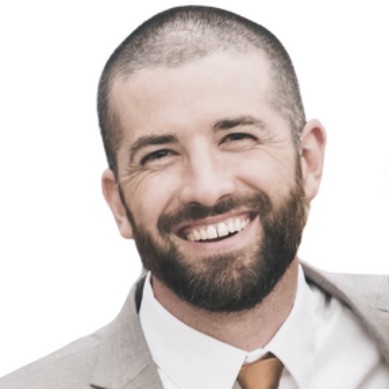Quality care is fundamentally tied to therapist well-being. As we all know, you can’t pour from an empty cup—and here at Eleos, we hear stories from burnt-out therapists and community mental health leaders all the time.
With provider shortages and turnover rates at unsustainable levels, we wanted to know: what’s really pushing behavioral health professionals to leave their jobs? To learn more about the drivers behind the trend, we went straight to the source—sitting down with real therapists who have dealt with these pressures firsthand.
Their stories highlight the true daily struggles—from overwhelming workloads and nonstop paperwork to the constant feeling of being unsupported—that push therapists toward burnout, frustration, and the difficult decision to move on.
Want to know how top behavioral health orgs keep burnout and turnover at bay? Download our Guide to Building a “Best Place to Work.”
I. Pavandeep: The School-to-Startup Clinician
Pavandeep Sandhu, a seasoned LMFT with experience in both community mental health and school settings, decided to try something new by joining a well-known mental health tech (i.e., online therapy) company. At first, she was attracted by the promise of a manageable caseload, but the reality turned out to be much different than she expected.
“I was honestly only there for, I think, two-and-a-half to three months,” Sandhu recalled. “They were continuing to increase the caseload requirement. I didn’t like it. I went back to working in schools.” She started to feel weighed down by the increasing productivity expectations, especially as the company kept bumping up the number of cases she was required to manage.
More and more administrative responsibilities stacked up on top of her clinical workload. “There were just a lot of freaking meetings,” she said. “It was weird, because I know they want to support you—but when the meeting just isn’t very beneficial, it’s like, why are we doing this?” The endless meetings and piles of paperwork made it hard to focus on the actual work with clients.
“Even though it’s all pro-profit-and-productivity, you don’t feel productive—because at that point, it’s just stressful,” she explained. And the constant focus on output and revenue left her feeling drained and unfulfilled.
In the end, Sandhu returned to working in schools, where she found a better work-life balance and a professional environment that aligned with her values.
| “Even though it’s all pro-profit-and-productivity, you don’t feel productive—because at that point, it’s just stressful.” – Pavandeep Sandhu |  |
II. Chris: The Veterans Advocate
Christopher Brown, LICSW, started working at the VA in 2016. He was drawn to the mission of the Vet Center Program, which was created to support Vietnam veterans. For a while, the work felt meaningful and fulfilling, and supporting veterans like himself gave him a deep sense of purpose. But over time, the job changed. The growing focus on productivity metrics—on top of increasing administrative demands—started to overshadow the therapy work he loved.
“The expectation of time and numbers…they kept coming up with these crazy formulas for how to justify that we’re doing our jobs,” Brown shared. The pressure to keep up with endless paperwork and manage a caseload that sometimes reached 70 clients—many of whom needed weekly sessions—became overwhelming. “I was working a lot,” he said, “My Tuesdays were 11-hour days for seven years.”
It wasn’t just the workload that wore him down—it was the feeling that the support he once had was disappearing. The values that had initially attracted him to the VA seemed to be getting lost in the push for more documentation and higher quotas.
In the end, Brown made the decision to leave, shifting to private practice where he could reclaim the autonomy he had lost. Today, he provides services in innovative therapeutic approaches, including specialized EMDR programs for first responders. Leaving the VA was difficult for Brown—especially when it came time to say goodbye to his clients—but he knew it was the right move for him to stay effective in the field.
| “I was working a lot. My Tuesdays were 11-hour days for seven years.” – Christopher Brown |  |
III. Jonathan: The Administrative Leader
Jonathan Belolo, LCSW, has a unique perspective as both a clinician and administrator in the mental health field. With experience providing substance abuse treatment and running a treatment center, he understands the wide spectrum of challenges therapists face—especially on the administrative side. While he hasn’t left his role, Belolo has seen many therapists quit because of the overwhelming burden of paperwork and data management.
Belolo recently increased the number of clients he sees in response to the growing need in his community. “As far as the therapy part, I do that because I feel like it’s a skill that if you stop doing it, you kind of lose it,” he said. “I used to just see some clients here and there, and now I started actually accepting insurance because I felt like a lot of people were struggling.”
As an administrator, one of Belolo’s biggest frustrations is how complicated it is to get useful data from electronic medical records (EMR) systems. “Some of the EMR systems that I’ve used—they could not have made it harder to run a report,” he said. The time spent handling data, creating spreadsheets, and making visual displays takes away from the time Belolo can dedicate to supporting his clinicians.
Belolo believes AI holds promise in easing these burdens. He imagines a future where an AI tool can quickly answer questions like, “Which therapists saw the most high-needs clients this month?” Or, “What was the primary diagnosis for our current census?”—queries that currently require a lot of manual effort. “It would be nice to have an AI partner and be like, ‘Hey, what was our admissions-to-discharge ratio this past month?’ and just have it spit out the answer,” he explained.
Even though he’s excited about the administrative and data analysis benefits of AI, Belolo knows it can’t replace the human connection in therapy. “I don’t think it could ever replace the human contact,” he said. He sees AI as a tool to help therapists manage their work better, reducing burnout by handling some of the nonclinical tasks that take up so much time.
Belolo hopes that as technology improves, it can make therapists’ lives easier without taking away the personal touch that’s so crucial to high-quality mental healthcare.
| “Some of the EMR systems that I’ve used—they could not have made it harder to run a report.” – Jonathan Belolo |  |
Therapists are leaving the mental health field. But it doesn’t have to be this way.
Therapists aren’t walking away from clinical practice because they’ve lost their passion for the work—they’re walking away because the system is failing them. They’re buried in paperwork, crushed by unrealistic productivity demands, forced to use frustrating technology systems, and left without the support they deserve. This level of pressure is enough to crush even the most seasoned behavioral health professionals.
At Eleos Health, we want to change that. By listening to therapists and taking the most burdensome tasks off their plates with the help of technology that’s truly built for them, we’re making their work more manageable. After all, when providers thrive, so do their clients.
Ready to see how Eleos helps behavioral health organizations stop provider turnover in its tracks? Get a personalized demo of our revolutionary AI platform here.
